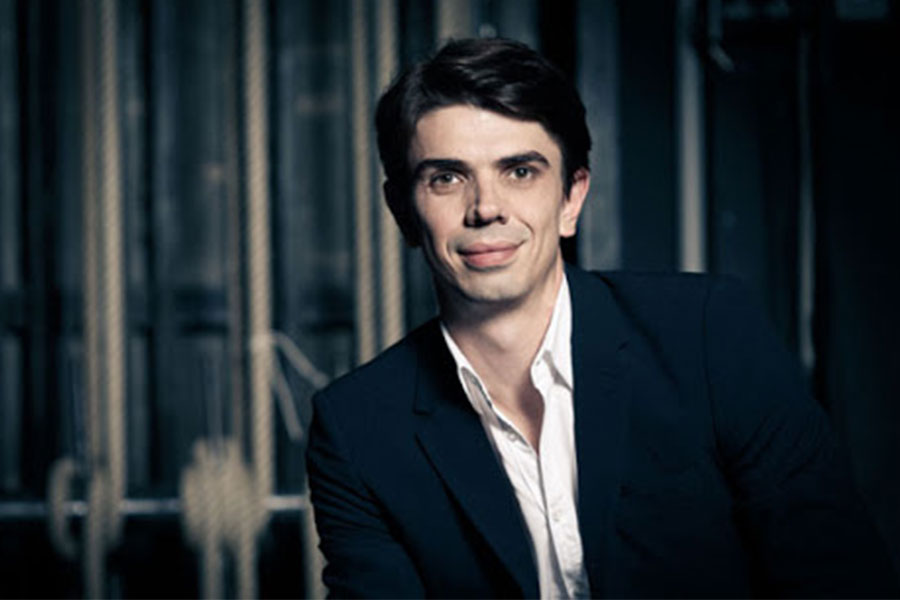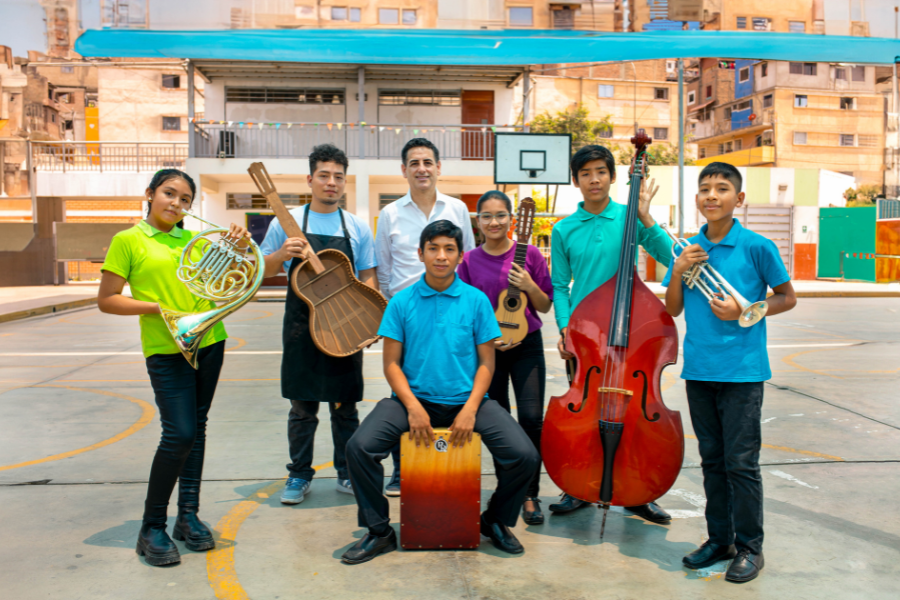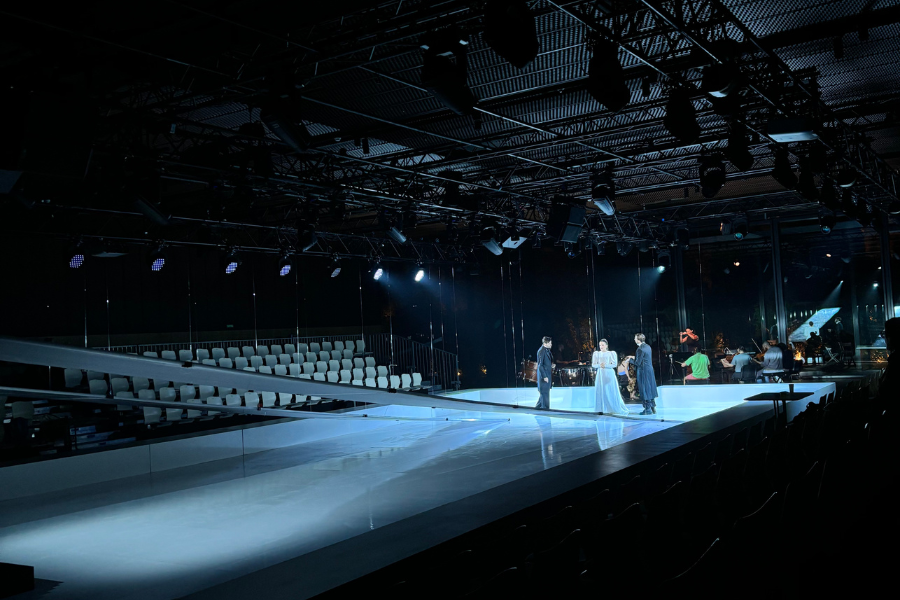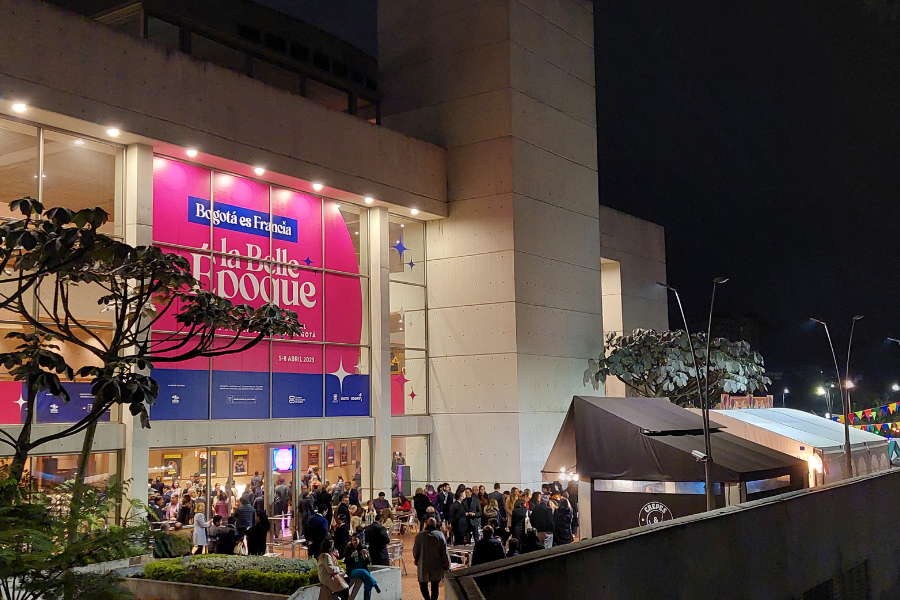Mathieu Guilhaumon: “Dance is a living art that should give space to new views on the world”
Prior to the premiere of Laboratorio, a series of works created by seven dancers of the Chilean National Ballet of CEAC, we spoke with artistic director Mathieu Guilhaumon from Dresden, days after the debut ofDie verkaufte Brautin the Semperoper where he collaborates as a choreographer.
At what point or stage is Banch (Chilean National Ballet) and what is the biggest challenge of being a choreographer / director?
The BANCH is at a very important moment, I’ve been with the company for about 5 years and about to start my sixth season. Now we are seeing the results and all the achievements we have done, which are reflected in the good attendance of the public and with invitations that come from Europe and South America.
The company has great visibility and a very good reputation, which is an achievement for me. This year we received the award from the Art Critics Circle of Chile for the work of Giselle, so this is a very good sign for the company.
The biggest challenge is to maintain a high artistic level, always with new proposals. That is not only a contribution for the professional growth of the dancers, but also to have a great variety of shows for our audience.
Laboratory becomes a new opportunity for professional development for BANCH dancers. How is it born and who pushes the bet for Laboratory? The cycle that shows the choreographic creations of the dancers of BANCH.
It’s something I’m starting with the company, something I had in mind since my arrival and that had not been done because we had not found the right period or space. For me it was important that this program could be presented at the Theatre of the University of Chile. This program is added to the ones that the company already has, and it is born from not limiting the work of the dancers to that of only performers, but that they can express themselves and develop as artists or creators. Especially in a contemporary dance company where the dancers participate in the creation. This is their own space to develop their art and to think about the future, one beyond the dance as I interpreted.
How was the curatorial process of choosing the works?
I was in charge of everything, I was in charge of giving them the framework, of how this was going to be done and obviously there was a lot of interest in doing it. There were seven dancers interested in creating choreography, and after the selection I finally left the space for the sevens who presented. There were certain instructions on the length of the piece, which should be ten minutes maximum. They had to take into account that after each work another one continued, so the sets and costumes had to live with the others. On the theme and music they had total freedom.

As a choreographer, why do you think new creation and experimentation in the world of contemporary art is important?
Dance is a living art, that means that we must always continue with creations that are linked to our environment. When you are creating you are imbued with society, so I think it is important for the public to see works that in some way reflect their world.
Dance is a living art, so it must give space to new proposals, different views on the world. Dance is not just one thing, there are many ways of doing dance, various ways of expressing oneself, it can be a more poetic theme, something more political, it can be a nice journey or a narrative. It is important to give space to the generation of artists that emerges and is born today.
How do you see the state and the evolution of it in Latin American theatres?
I believe that things are evolving and moving slowly, but at least they are moving. I do not deal with the current situation in Latin America, but I can talk about Chile. For example, there have been more spaces and proposals in recent years, but I think that today in Chile there is still much to do especially in terms of cultural policies. The State could be much more involved in supporting the artist, dance and art in general.
There are initiatives similar to Laboratorio in Argentina, at Teatro Colón in Buenos Aires with the “Choreographic Workshops” of the Experimentation Centre, which show the work of the dancers of the Company. What kind of similar initiatives have inspired you and how do you think this work can be promoted more in Latin America?
What I have developed with Laboratorio is something that I as a dancer have always lived, because in all the companies in which I danced, especially in Europe, there was a program called “Young Choreographers”, which was a space where the dancers of the company create their own works. In fact, that was the opportunity to develop as a choreographer from an early age. In the first company I was at when I was twenty years old, I started creating my works because it had this program. At the Opera du Rhin, I was lucky to have a director who supported me a lot in this, it allowed me to develop as a choreographer and do what I am doing today.
Your career as a choreographer in opera productions is well known. To name a few you worked inThe Knight of the Rose at the Opera National du Rhin, in Lulú with Mariame Clément at the Municipal de Santiago, and now you are premiering Die verkaufte Brautat the Semperoper in Dresden. How has your work been in the field of lyric having worked in the field of contemporary dance?
My experience with the opera is more than that, now in Dresden we are doing the sixth collaboration with Mariame Clément. The work with her has been more than working in opera, it has been an artistic encounter, because we have a very similar sensibility. We agree on our visions and when we met in 2010 – when I danced in the play Platée, we immediately connected and then proposed to do choreography for the opera. I’ve always been interested in this, since I do not want to limit my work to just one format. For example, nowadays I work with a contemporary dance company, but I also want to work with people who are not dancers, like a choir singer, solo singers, actors, extras in the case of the opera.
In the case of Dresden I am working with contemporary dancers from the local independent scene, they have been different experiences and super interesting because it is another job.
Today I am integrating myself in a bet. Mariame has all the régie. There is a world, there is an artistic proposal about a work and I have to accommodate myself to this. So my job is to soak up Mariame’s proposal, to put the movement at the service of the staging, and what is of great interest to Mariame, is that for her dance always is part of an opera. She doesn’t consider it as a separate number or a divertimento within the opera. The dance must be integrated into the proposal in an organic way, it has to be justified not only because it looks nice to see dancers who evolve in the work.
In addition to that, I take care of the general movements, such as the movement of singers on stage and drawings of space.
Since I was a child I have not limited the dance to just one thing, that is contemporary, classical, jazz, I do not care, diversity keeps me alive rather than enclosing myself in a pure style.
You have studied, worked and created in Europe, the United States and now you live in Latin America. As a French man, how has your life experience been these years in the Region?
Living in Latin America is adding to all the previous experience I have. I left France at the age of 17 and I believe that along the way I learned one thing: that when you come from a place you think that all the rules and culture is the absolute truth. As you discover the world you open yourself to more things, you open yourself to other cultures, to other ways of living and seeing the world, other ways of approaching art.
When I arrived to Latin America I had already had all these trips, so I did not have any prejudice since my French culture stopped at 17 because later I lived in Switzerland, Germany, United States. I consider myself a person who has been nurtured many cultures.
Living in Latin America has been very interesting because it is very different from what I had lived before, I see it as a contribution for me since all places have their advantages and disadvantages, but it is part of the growth process. It has been very intense and enriching for me personally. It has allowed me to discover Latin America and learn a new language. The more you live in your life, the more open and tolerant you will be to the world, to the other, to the difference. I hope to continue knowing new countries and live more experiences like these.
ABOUT LABORATORY
The Chilean National Ballet, BANCH begins its 2019 season with a special cycle where the company will present a series of works created by seven dancers that make up its cast. There will be only two functions, on Friday 8 and Saturday 9 March at 8:00 pm at the Teatro Universidad de Chile.
To my soledade swill be the first piece that the public will be able to see, a work by Rodrigo Opazo, who points out that “work is born from the concept of absence”, where the creative process took them through a journey through different situations. Next will be Botar, by Gema Contreras, a proposal that presents a single female, based on the interaction of a dancer with a ball, in addition to the intervention of a technician.
Then come Assertive Inclination, by Amaru Piñones, a socio-cultural analysis transformed into a metaphor, where an exploration work focused on the communication of bodies and the transmission of energies was developed. On the other hand, do not you really care?, by Valentín Keller, poses a look at the micro worlds that are created and disarmed in today’s society, in a proposal that in turn seeks to see how the viewer affects what is being shown on the scene.
What if …,Enrique Faúndez, is a piece that analyzes and questions the limits with technology. The dancer explains that “it is the duty of each one to see how technology takes favor and not against. How we overcome that barrier and we can converse, debate, play. ” Then comes Kintsugi, by Nicolás Berrueta, will, a creation based on a thousand-year-old tradition of Japan, which consists of recovering broken objects. Berrueta comments that “what we did was to search, investigate our own bodies and scars, and highlight those stories we have to tell, turn them into dance”.
Finally it will be the turn of Beast, by Fabián Leguizamón, a work that, in the words of its creator, is presented as “a ritual that seeks to investigate, through the instinctive, that performers on stage call this beast, see how this it comes out and makes them go through different bodily states. “
Through the seven proposals that make up Laboratory, the dancers of BANCH embark on a choreographic journey, also taking decisions regarding costume design, lighting and scenography.






